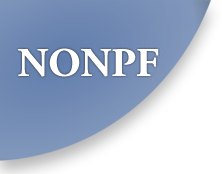Implementing a Longitudinal Interprofessional Curriculum: The University of Minnesota 1Health Journey
To ensure that health care graduates are prepared for this collaborative practice it is essential that students are educated in the context of an interprofessional curriculum. Developing a longitudinal curriculum is challenging in a large academic health center, but a clearly defined framework will guide the work that is necessary. Currently, a university is implementing a four-year interprofessional education (IPE) curriculum that addresses foundational knowledge, necessary skill development and interprofessional experiential opportunities (appendix A). This poster details the successes and challenges we have had on this journey.
Some of the successes were: support of the deans of all of the schools, development of a curriculum framework (appendix B), a core team with dedicated time to implement IPE curriculum (the 1Health team), an interprofessional curriculum committee work-group, faculty champions, and a formalized faculty development curriculum. Some of the challenges that were encountered include: conflicting program rotations/schedules, lack of financial incentive related to IPE workload, lack of evaluation data, perceived lack of momentum, and lack of broad faculty engagement.
The University continues to build on its success and learn from its failures while keeping in mind the ultimate goal of creating collaborative health care providers ready to tackle the Triple Aim in a transforming health system.

